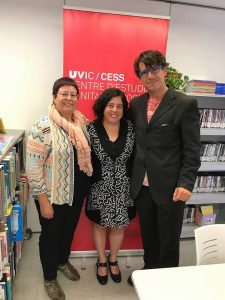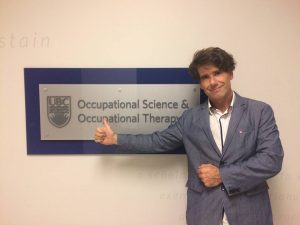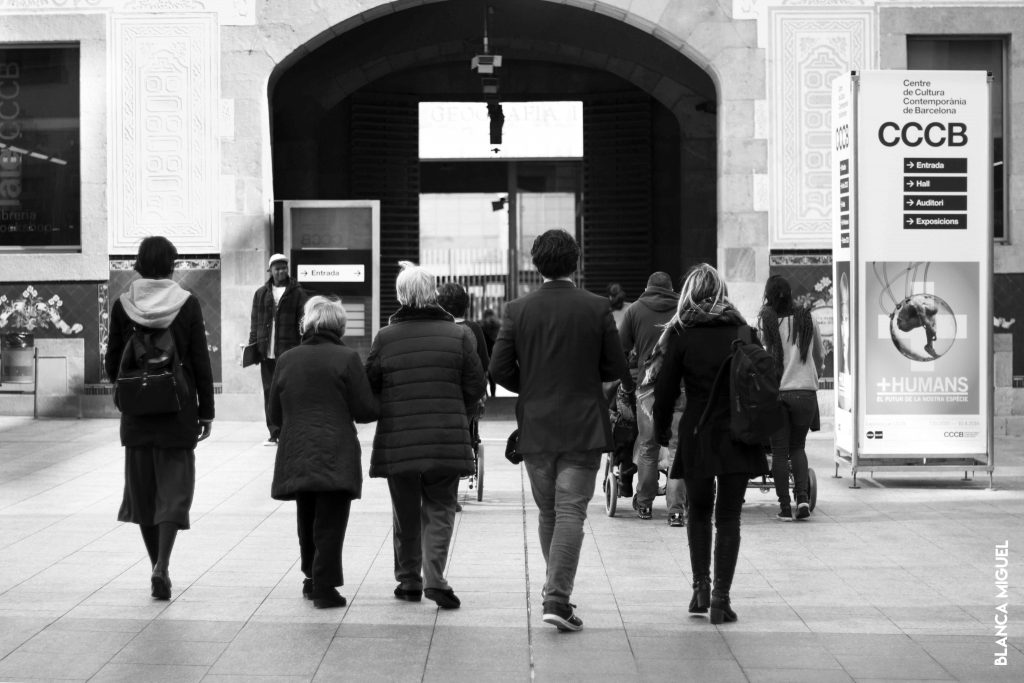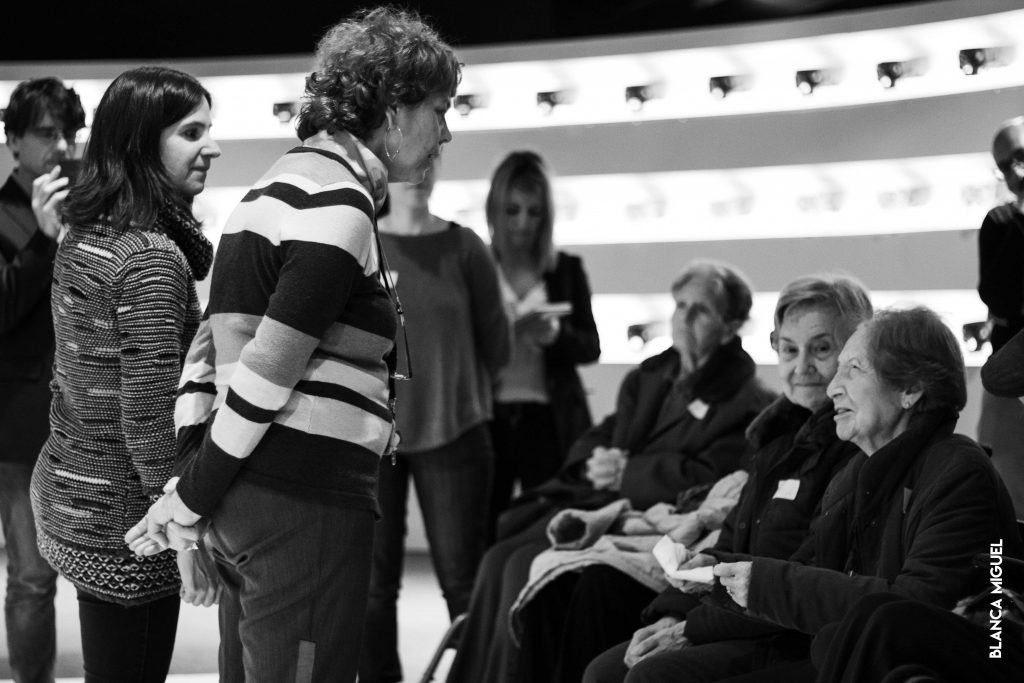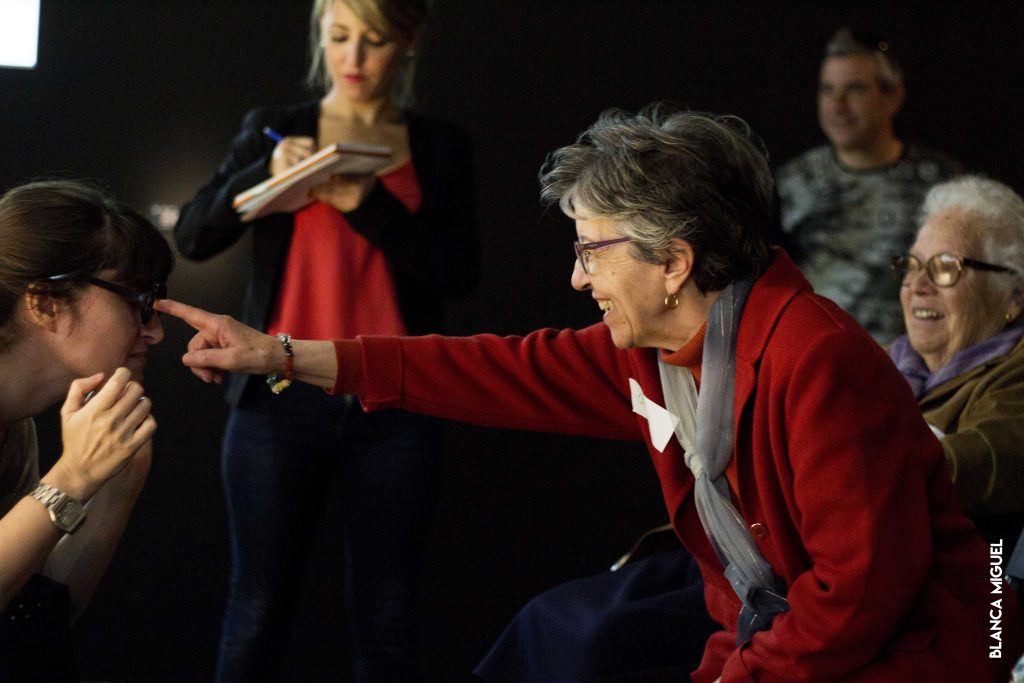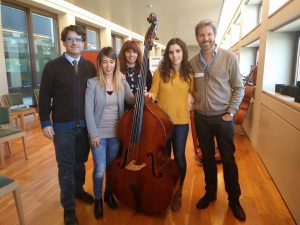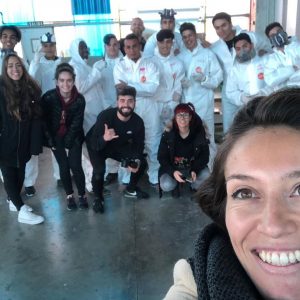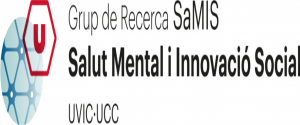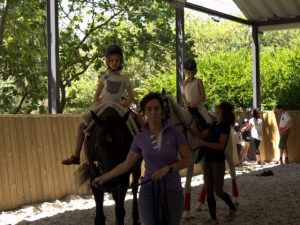
Co-Director of the Chair of Mental Health UVic-UCC
Coordinator of the research group Mental health and Social Innovation UVic-UCC
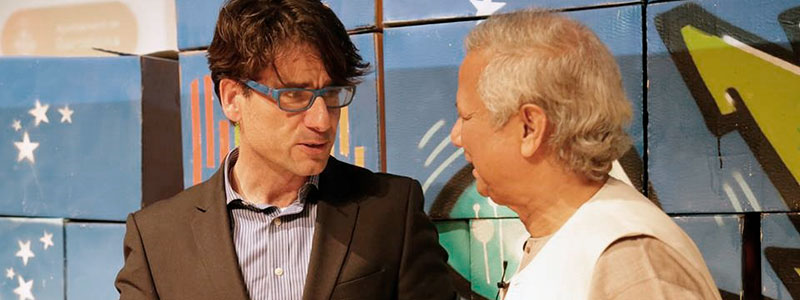
Doctoral theses directed
LIST OF THESIS
I have directed the doctoral theses of:
PhD. Mónica Palacios, on Occupation with groups in a situation of social exclusion.
PhD. Lidia Revuelta, on Client centered interventions with people with people with intellectual disabilities.
We are currently working on the theses of:
- Penelope Aguilera Martínez, on Drug Addiction, management and Occupational Therapy.
- Nerea Díez Ríos, on Art, mental health and social participation.
- Ivan Cano, on Recovery and Mental Health.
- Ivan Alsina, on New technologies and Mental Health.
- Cristina Guillen, on A new Measure of Corporate Social Responsibility.
- Encarna Martínez, on Simulation and Well-being.
CLIENT CENTRED INTERVENTIONS WITH PEOPLE WITH INTELLECTUAL DISABILITIES
Doctoral thesis developed by LIDIA REVUELTO
Directors: Salvador Simó and Amparo Oliver
PhD Thesis On line
Article related On line
Article abstract: The detrimental effects of caregiving have been well documented. In order to compensate for the disadvantages of caring, research has also tried to identify factors associated to caregivers’ subjective well-being (SWB). Aims: We aim at presenting an integrative model of SWB. Methods and procedures: Sample consisted of 228 staff working with people with intellectual disabilities. Measures employed included three different components of self-care (social, internal and physical), mental and physical health, conscientiousness, hope, and life satisfaction. The model aimed to explain SWB, measured by life satisfaction, by several variables (self-care, mental and physical health, and conscientiousness), while checking for the role of hope as a partial mediator of these relationships. Outcomes and results: Results show an overall good fit of the model: χ²(6) = 12.274, p =.056; CFI =.953; RMSEA =.077 [.000,.139], hence establishing the first model of prediction of SWB of staff in services for people with intellectual disabilities. Conclusions and implications: Social self-care, mental health and conscientiousness were capable of explaining life satisfaction but only through hope, that is, these factors did not have significant direct effects. The presence of hope may be then necessary for these factors to benefit staff. Strengths and limitations are discussed.
COLLECTIVE OCCUPATION, SENSE OF COMMUNITY AND WELLBEING
PhD Thesis of MÓNICA PALACIOS.
Directors: Salvador Simó, Ángel Martinez Hernáez, Montse Vall.
Summary: The research topic is Collective occupations, sense of community, and its relationship with well-being / psychosocial discomfort, of groups of young offenders from popular sectors of the Metropolitan Region, in Chile. The psychosocial is assumed from critical perspectives where the intersubjective (psycho) is produced by social conditions of life.
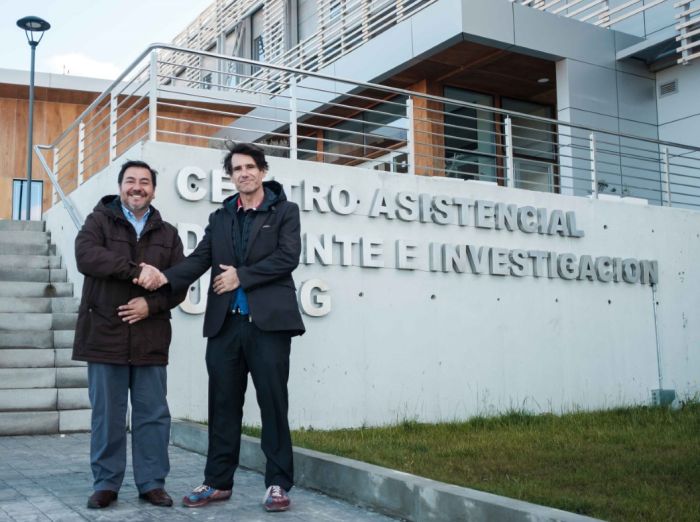
Director of Research group Mental Health and Social innovation
SEE MORE
I have the honor of coordinating the GR Mental Health and Social Innovation (SaMIS), made up of some 36 researchers, from the institutions:
– UVIC-UCC.
– Althaia Xarxa Salut Mental.
– Consorci Hospitalari de Vic.
– Osonament.
Our lines of research are:
– Social innovation and Recovery.
– Suicide.
– Deep mental disorder.
– Social and public health.
– Neurosciences.
I have the honor of working closely with:
– University of Yale (USA).
– University of British Columbia (Canada)
– University of Manitoba (Canada).
– Karolinska Insitutet (Sweden).
– Polytechnic of Porto (Portugal).
– Hogeschool Berlin (Germany).
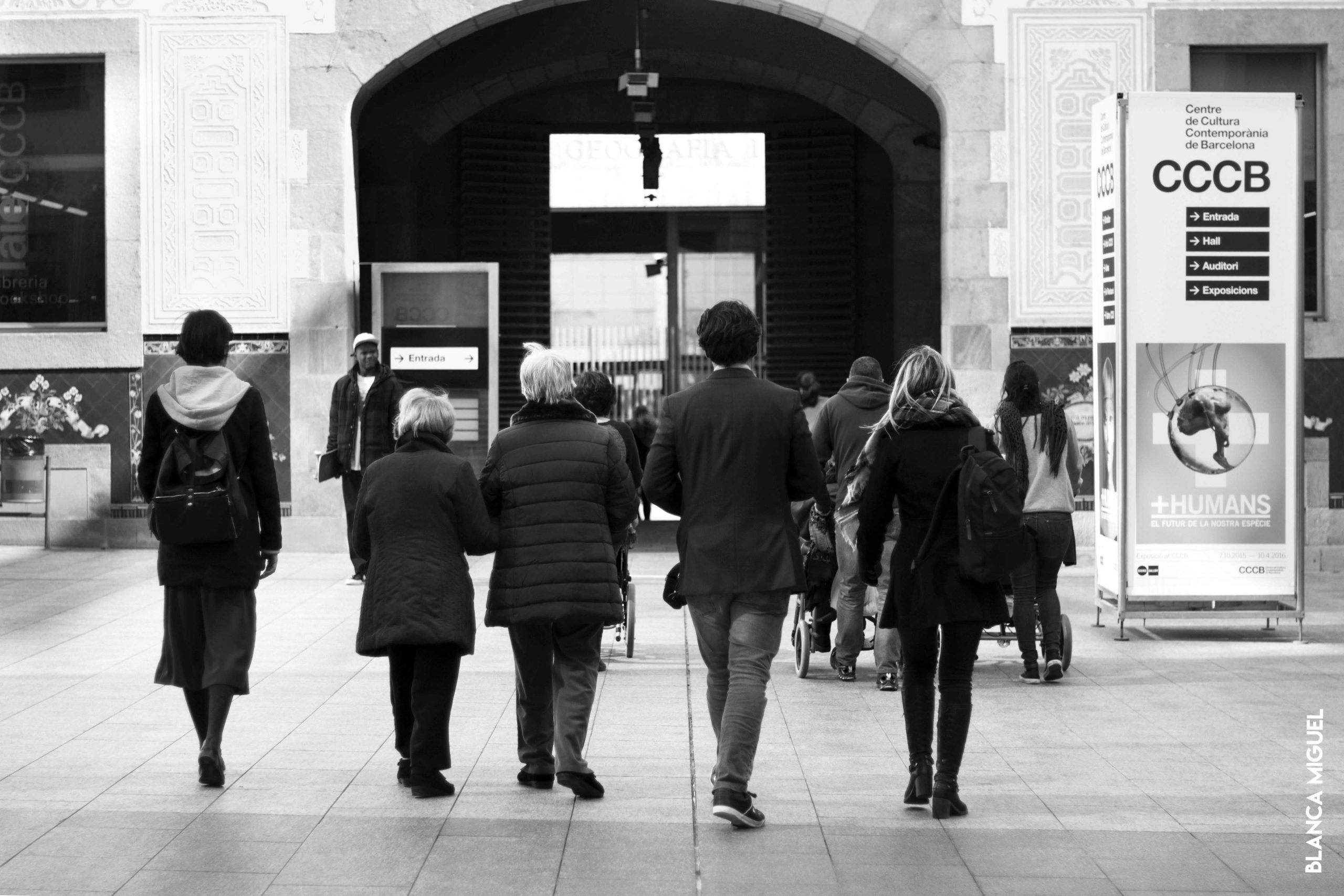
Art and culture for well-being and social inclusion
We are developing action research projects with people with Alzheimer’s and mental illness. We have the honor of working with prestigious international / national institutions, such as:
- The Center of Contemporary Culture of Barcelona CCCB, Barcelona.
- The Thyssen Bornemisza Museum, Madrid, Spain.
- Auditori Nacional de Catalunya, Barcelona.
- The Serralves Foundation, Porto, Portugal.
- Winnipeg Art Gallery, Manitoba, Canada.
- Museum of Fine Arts, La Coruña, Spain.
- Museum de Manresa, Catalonia.
- Vic city museums and cultural resources.
THE IMPACT OF CULTURE ON PEOPLE WITH ALZHEIMER'S DISEASE
Introduction
The research has been based on evaluating the impact of the Art & Alzheimer project developed by the Center for Contemporary Culture of Barcelona (CCCB).
See audiovisual about the project.
Article in Art, Individual and Society (Spanish)
Conference about the project in U-Manitoba, (Canada).
Objective
Understand and evaluate the impact of the Art & Alzheimer program on the participating people.
Description
The research is based on knowing the impact of the CCCB-Alzheimer program. A mixed research approach has been developed, although qualitative research has been further enhanced within the framework of a critical hermeneutic paradigm. At the quantitative level, the Non-Pharmacological Therapy scale has been used. At a qualitative level, focus groups have been combined with users and caregivers / family members; participant observation during visits and a questionnaire with the educators. The results have been interpreted and triangulated.
The results show the positive impact that the program has on the welfare and social participation of the users, showing that it also has a positive impact on caregivers / family members and educators. It also shows the limitations of the program, making proposals for its improvement. Educators play a key role in the success of the program.
Conclusions
The research developed from the CCCB-Alzheimer program shows how art and culture are a powerful instrument for the well-being and social inclusion of people with Alzheimer’s disease. Their participation in art and culture spaces should be encouraged, promoting the current trend towards inclusive culture and museums.
Centers such as the CCCB show their commitment to promote accessibility to all citizens of their spaces, paying special attention to the most vulnerable groups, in the post of an inclusive and emancipatory culture.
Decalogue of conclusions on the CCCB-Alzheimer program
1. It has a positive impact on the welfare and social participation of users.
2. It improves your emotional well-being, causing your enjoyment. Humor is very present during visits to the CCCB.
3. It has a significant impact on a cognitive level, stimulating their attention and interest, orientation to reality and greatly facilitating the evocation of memories. It highlights in this section the enjoyment of novelty, very close to learning.
4. Participation in the program breaks the situation of isolation and exclusion in which users find themselves. It facilitates social interaction, being the relationships of mutual help between the users themselves relevant.
5. The evaluation of the program is very positive by caregivers and family members.
6. Educators play a key role in this success, facilitating personalized attention, encouraging the participation of all users, carefully adapting sessions, and validating user participation.
7. The accessibility of the museum is a very important aspect, within the framework of the museums’ tendency towards inclusion.
8. The temporary arrangement, human resources and the nature of the exhibitions themselves are the main limits of the program.
9. The caregivers propose to extend the duration of the visits, as well as their regularity. The educators’ proposals are oriented towards expanding the team and improving accessibility.
10. The positive impact of the program on both caregivers, family members and educators stands out.
PROJECT WITH THE CATALUNYA / ESMUC NATIONAL AUDITORIUM
Research to find out the impact of the Un matí amb l’orquesta (A morning with the Orchestra) project of the Apropa Cultura (Bring culture closer) program being carried out at the National Auditorium of Catalonia. In the same people with dementia and intellectual disabilities participate in three activities related to music. In the first phase, ESMUC musicians play pieces specially selected for them; in the second they listen to the National Orchestra; and in the third phase they themselves play music with the guidance of music therapists.
From the Chair of Mental Health we have developed a mixed investigation to know the impact of this activity on the well-being and social participation of users, as well as the impact on caregivers, music and music therapists.
You can access the investigation report (Spanish).
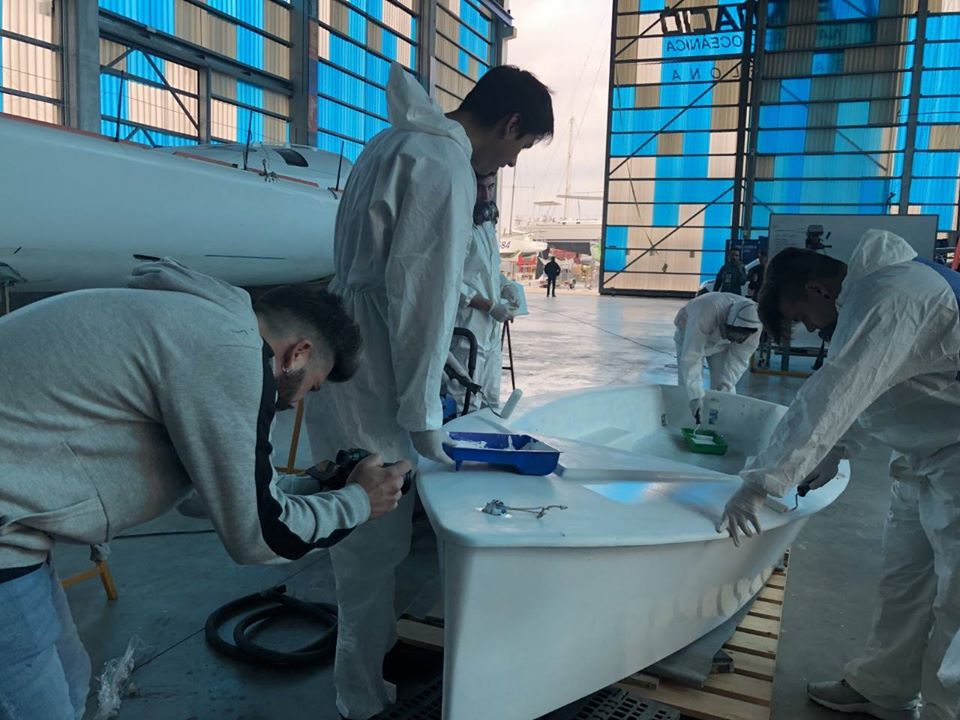
Job inclusion, wellbeing and social participation via sailing activities
RESEARCH
INSERMAR is a social-labour integration project for young people with social exclusion problems. It is based on training young people as boat mechanics and sail monitors.
The research wants to understand the impact (occupability-social inclusion-wellbeing) of this project on the clients (teens) and in the participation institutions. A mixed research has been designed.
Project in partnership with the Catalan Sailing Federation and With CARES. On this project we develop a mixed investigation.
Under development.

Impact of the Peer to Peer strategy in mental health survivors
RESEARCH
Peer to peer project is based on job placement for people with mental illness problems. Peer to Peer project has trained, accredited and hired people with mental illness, incorporating them as support agents in mental health teams. It is based on the philosophy of Recovery, which starts from the strengths of the participants.
The research wants to understand the impact of this project (wellbeing, social participation, occupability) of the peers, and also the impact of the people with mental health problems attended and in the temas. A mixed research has been designed. Under development.
It has been developed with Althaia (IP Dra. Gemma Prat), Osonament and UVic-UCC. It has been financed by Obra Social de La Caixa via the national call for Social and Labour Insertion.

Mental health, new technologies, job inclusion and Recovery
RESEARCH
This research is part of the PhD Thesis of Ivan Alsina. The goal is to research how we can improve the wellbeing and job inclusion of the persons experiencing problems of mental health through ICT and new technologies. The research is inside the Recovery and client-centered approaches.
Use of the most emerging technologies such as Virtual Reality, Augmented Reality, Wearables and Apps for mobile devices in the socio-health field. We accompany in the process of design, development, implementation and validation of technological applications to improve the well-being and quality of life of people.
PhD directors: Salvador Simó and Gemma Prat.
Under development.
Ivan Alsina.

Creating a new measure to evaluate the Corporation Social Responsibility CSR
RESEARCH
This research is part of the PhD Thesis of Cristina Guillén at UVic-UCC.
The main aim is to design a new measure for the Corporation Social Responsibility. The research is one in collaboration with Sergi Codonyer and the social business Organic Africa Chocolate.
PhD Directors: Salvador Simó, Elisanda Terrats and Xavier Gironés.
Under development.
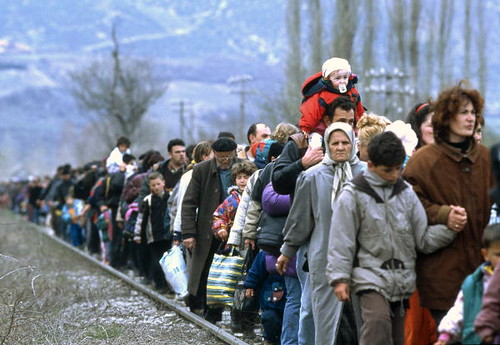
Improving the psychosocial interdisciplinary programs for refugees
RESEARCH
InterAct – Interdisciplinary Cooperation in Psychosocial Interventions is a project funded by the European Union whose purpose is to create the best psychosocial care for refugee and migrant communities, through interdisciplinary cooperation. The project has a research dimension.
The research wants to improve the psychosocial attention for refugees. The goal is to better understand the refugee experience, the strengths and resources of the migrant communities, the perception of the refugees and the professionals about how to improve the psychosocial interventions. A qualitative research has been designed.
Project in partnership with UVic-UCC, Karolinska Institutet, Hogeschool Berlin, National University of Athens, HCI Productions.
Team: Sarah Scheer (IP), Margarita Mondaca, Ramon Grützner, Eric Asaba, Manuel Guerrero, Eirini Adamopoulo, Ama. Auvinen, Salvador Simó.
Under development.

Impact of horse related activities in the wellbeing and social participation of children under exclusion
RESEARCH
Riding Together – Solidarity on Horseback known as RITSH, aims to promote social inclusion and equal opportunities using horse-mediated activities, within an international partnership between organizations from six European countries: The British Horse Society (BHS, United Kingdom), Institut Français du Cheval et de l’Équitation (IFCE; France), Movigo Sport (Germany), Scuderie del Peschio (SdP; Italy), University of Vic – Central University of Catalonia (UVic; Spain) and Todos a Galope (TaG; Portugal). Riding Together – Solidarity on Horseback is being developed with the support of the Erasmus+ Programme of the European Union.
The research has focused to understand the impact of the horse related activities in the participants (children under social exclusion) in relation to their wellbeing and social participation. A mixed research was designed.
See the research methodology and results in this report (pp. 98-110)

Suicide-life
RESEARCH
Research team: PhD. Salvador Simó; PhD. Francesc Arrufat; PhD. Carlos Peña.
Video on the results of the investigation (Spanish).
Article published in Journal of Humanistic Psychology.
GOALS
Understand the relationship between certain environmental and occupational (work) aspects with the development of maladaptive behaviors that would result in suicide attempts, as well as the resilience mechanisms that have helped people to move on with their lives.
INVESTIGATION PARADIGM
Durkheim (1897 [1965]) defined suicide as any death that results mediately or immediately from a positive or negative act carried out by the same victim, but accidental events are not considered in this regard, so it is necessary to add that suicide will be contemplated as such when the victim knows with certainty what will happen to her action.
The investigation is developed from a hermeneutical paradigm. Hermeneutics has a long and winding history that begins in classical Greece, is based on the desire to interpret and establish a correct meaning based on the understanding of the facts. The idea of hermeneutics is that in all human actions there is a possibility of communication and understanding (Escalante, 2002). Vital to this understanding is the ability to listen. We approach things through dialogue. Interviews and other qualitative methods are as old as written history, but it is from the nineteenth century that what we now call qualitative methods were consciously used in medical and social research. After a preponderance of positivist methods, we experienced a resurgence of qualitative methods (Pujadas, 2000), within the framework of a deep debate around qualitative and quantitative research. The purpose of the study is to be able to understand, interpret. Qualitative research is concerned with understanding the forces that move human beings, their motivations, feelings, and ideas.
There are groups that have traditionally been denied the word, or whose word has been discredited. Sousa Santos (2005) talks about the existence of a sociology of absences and the need to develop a sociology of emergencies. This research has sought to return the voice to people with mental illness.
METHODOLOGY
The term methodology designates the way in which we approach problems and seek answers. Our supposed interests and purposes lead us to choose one or another methodology (Taylor and Bogdan, 1987). Between the initial formulation of a problem and the final application of the research results to that problem, multiple possibilities open up. The adequacy of the techniques for gathering the data is usually judged in relation to the criteria of reliability and validity. Reliability requires that repeated measurements provide identical results or are within narrow limits that can be justified. The validity criterion requires that the measurement be significantly related to the research objectives, that is, that it measure what one wants to measure (Cannell and Khan, 1992).
The present investigation is based on a qualitative methodology. His choice has been based on the nature of the question, which seeks to understand a certain reality. The qualitative approach starts from the observation of phenomena and then organizes them into a whole. The first concern is the description and interpretation of the observed phenomenon. Qualitative research often applies to problems about which we know little. Its objective is to expose knowledge, starting from induction. Through the analysis of events, common patterns are sought. When researchers identify a phenomenon, concepts are defined and hypotheses about causes and relationships are developed. As knowledge advances, hypotheses and theories can be modified.
The narrative biographical method is a form of contextualized knowledge creation (Dossa, 2009), but nevertheless it can provide us with an understanding of similar ones and therefore have power to be generalized to some degree (Susinos and Parrilla, 2008). More when we develop multiple biographical accounts. Pujadas (1992) distinguishes two modalities of this type of story, the parallel and the crossed. The former are life stories of people who do not know each other or have ties to each other. The latter are based on telling the same story in a polyphonic way, with people who share a bond (neighbors, family). In our case, we present five parallel biographical accounts.
Being listened to allows the person to listen, it supposes an audience, a connection of the personal world with the social world that implies a breakdown of the situation of isolation in which they find themselves many times. It is an act of recognition of their humanity and the beginning of a dialogue and a sense of agency, of active participation. It allows us to reveal the power structures, the structural violence, that the people we listen to now suffer. Thus, the act of listening has four phases: 1) Listening begins with asking questions about the nature of the society in which we live. 2) It must lead us to produce a change, from our social and political position. 3) Listening implies recognizing that change is not achieved in a linear way nor is it encapsulated in the individual, but rather speaks of the need to create communities of solidarity where differences can be accommodated. 4) Listening must value and validate the ways of speaking of disempowered groups in order for their voices to be heard.
Shaw (2003) claims that sharing a story produces obvious benefits, including a sense of perspective, self-knowledge, community building, and a better sense of how you want your story to end. But the same author warns us that this method can awaken feelings that were dormant. This imposes great caution on us as researchers, as this method can bring out latent traumatic aspects of people’s lives. It is therefore essential to take into account the context where it has been carried out as well as the process of how the interviews have been carried out. The framework has been the Mental Health Center of the Vic Hospital Consortium, and the interviews have been carried out by the reference psychiatrist of the participants. By saving these warnings, we can find evidence of the therapeutic value of narratives. The research by Roe and Davidson (2005) stands out, highlighting both the difficulty that people with mental illness present in creating a coherent narrative about their own life; as the importance for them to be able to do it in order to rebuild their sense of self, their capacity for agency, becoming the authors of their own life project, considering that this work is key in their recovery process. Miró (2005) affirms that although not all narratives are therapeutic, psychotherapy can be understood as the construction of therapeutic narratives.
The semi-structured interview
The in-depth interview is the main source for collecting information. The researcher and the participant engage in an interactive dialectical process, in a discourse that elucidates broad descriptions of the phenomenon under investigation. The interview is preceded by a brief (10-15 minute) warm-up period, with relaxed conversation in a cordial setting in order to help the participant to relax. It is important to refer to the possible limitations of this technique. A limitation is that the subject may be partial. Another limitation may be found in the inability to provide certain types of information. Memory bias is another factor that can prevent the interviewee from providing accurate information. We can solve these difficulties thanks to the capabilities of the interviewer and the ingenuity of the instrument used to obtain data. When preparing the questionnaires we must choose a language that provides the maximum opportunity for communication. Saying that the questionnaire must be formulated in the interviewee’s language is not enough, we must also ask the questions taking into account their frame of reference. We must avoid putting the subject in a position to give socially unacceptable answers, as well as asking questions in a way that contains suggestions on how to answer them. Questions should focus on a single idea. The psychological aspects of the interviewee are of great importance, such as the motivation to carry out the interview. The subject may perceive the interviewer as an authority figure. A first factor is that the interviewee feels that the content of the interview is significant for a change or the interviewer’s perception as a person who can make the change. A second factor is based on the interviewer’s personal relationship with the subject. Optimal communication takes place when the interviewee feels the interviewer as a close person (Cannell and Khan, 1992).
An average of five interviews with each participant, lasting one hour, have been carried out. From its transcription, the initial drafts of the life stories have been prepared. One or two extra interviews have been developed in order to contrast the stories with the participants, resolve doubts and expand certain fragments.
SAMPLE
Retrospective longitudinal descriptive study carried out with 5 users, recruited in two mental health centers, in follow-up of outpatient mental health consultations for different psychiatric pathologies (Major depressive disorder, dissociative disorders, schizophrenic spectrum disorders and personality disorder), who have presented autolytic attempts in the past. The indispensable inclusion criterion is having made one or more self-political attempts in the past.
We highlight the fact that it is part of an international bicenter study developed jointly with the University of Porto, with an additional sample of 6 patients. This study is based on the same methodology and inclusion criteria. This will allow us to triangulate the research results and gain a better understanding of the study topic. A total sample number of 11 patients is used, a considerable sample for a qualitative study carried out with the life history information collection method.
DISCUSSION
We structured the discussion from the following points:
The relationship of childhood trauma to suicide attempts
After the qualitative analysis, different categories are established. 1) Physical abuse and sexual abuse, which are related to impotence, the inability to understand the reason for the mistreatment, guilt and secrecy. 2) Poverty and social declassification, which are related to lack of meaning and social marginalization. 3) Family breakdown, which is experienced as a traumatic event maintained throughout childhood. These events are considered as generators of their mental disorder by the study participants.
Child trauma appears as the cornerstone on which the stories of all participants are based. In the narratives a summation of trauma appears. In the case of Frida we can speak of physical, psychological and sexual abuse, added to the experience of poverty. Sebastián suffers both physical and emotional abuse, he refers to workplace abuse. Yanka suffers physical abuse in addition to an episode of sexual abuse, along with growing up without her parents in an orphanage. Javier and Julia experience separation from their parents. At Frida, Yanka and Sebastián we can also talk about the difficulties of the immigration process. These findings are consistent with the extensive literature linking childhood trauma with suicide attempts (Devries, 2014; Barbosa, 2014; Álvarez, 2011 and 2012). It is essential to develop preventive programs in situations of abuse. In the event that they do occur, it is essential to intervene early to minimize their impact and avoid their serious long-term effects. The comprehensive approach to poverty appears as a fundamental measure linked not only to social inclusion but also to health.
The influence of resilience on the trauma response
In the qualitative analysis, categories related to lack of resilience or fragility appear, such as: 1) Child trauma. 2) The unstructured family. 3) Lack of meaning. 4) Inhabitants of the country of stigma.
Mental health is a fundamental element of resilience, it is the capacity for positive adaptation that allows people to both face adversity and reach their full potential and humanity (Anderson et al. 2005). It implies the ability to develop a meaningful life project despite having experienced a traumatic experience.
Trauma experiences accumulate in narratives. We can understand this lack of resilience, or its fragility, taking into account the three factors raised by Cyrulnik (2002). First of all we must consider emotional scaffolding, built from affective relationships. There is a clear relationship between children’s emotional scaffolding and subsequent crime, drug abuse, and suicide rates (Anderson et al. 2005). They all lack positive emotional scaffolding. The role played by the maternal and paternal figures, especially the maternal, is very significant. The mother who mistreats and gets to shoot Sebastián; that he physically and psychologically mistreats Frida, consenting to sexual abuse; Javier’s distant mother; or the absent mother in the cases of Yanka and Julia. A total absence in the first case, an orphan, who is not present due to illness during the childhood of the second. The figure of the father does not appear as an element of resilience either. The father consents to Sebastián’s abuse; is an alcoholic or has addiction problems in the cases of Frida and Julia; she is absent in the figures of Yanka, orphan, and Javier, as a result of the divorce and her second marriage, although she was a positive element like Julia’s mother. Julia expresses figures that have helped her build positive emotional scaffolding, such as her sister and aunt. In Yanka we find the positive figure of the coach and Wanda, who visited her at the orphanage.
The second factor of resilience is the ability to make sense of traumatic experiences. Certainly, it is difficult to make sense of experiences of abuse, especially in cases when it occurs within the family or is tolerated by it. Being an orphan, divorce or parents’ illness, living in poverty are experiences that can hardly be found meaningful. This need to make sense of the traumatic experience was manifested in the narratives of the surviving children of the war trauma in Kosovo, with whom the first author worked (Simó Algado 2002, 2004).
Finally, we must consider the social response to trauma, how others react to abuse. The response has aggravated the trauma situation. We find cases of denial, such as Frida’s mother who denies abuse, Frida herself states that it was taboo for her family. The answer is incredulity in Javier’s family. In Yanka the abuse by the caregiver is also silent. Child abuse, mental illness, suicide attempt are still stigmatized and are taboo for our society.
It is important to develop programs that promote the construction of emotional scaffolding, supporting families in difficult situations in the education and upbringing of children. It is essential to therapeutically help people who have suffered trauma so that they can find meaning in it. It is essential to raise awareness in the community about the reality of mental illness and suicide, developing anti-stigma campaigns and programs, in order to model social responses to trauma.
Suicide as an escape route from the lack of meaning
After the qualitative analysis, categories such as: 1) Suicide appears as an escape route. 2) Lack of meaning. 3) Suicide in response to trauma. 4) Suicide as a response to illness and / or pain.
The Declaration on Mental Health for Europe affirms that mental health and mental well-being are fundamental to the quality of life and productivity of individuals, families, communities and nations, allowing people to experience that life has meaning and be active and creative citizens (WHO, 2005). In this definition, the experience of meaning appears as a key element. Frankl (1964) stated that when faced with a lack of meaning, people can respond via addictions, aggression, or via depression and suicide. In this situation, logotherapy poses the need to help the person find a meaningful life project. Likewise, Maslow (2003) stated that in the same way that non-satisfaction of basic needs causes pathologies, non-satisfaction of higher needs, among which is the need to find meaning, causes meta-pathologies.
The question about the meaning of life appears clearly in the different narratives, as well as the difficulty or impossibility of giving a satisfactory answer. Following the consequences marked by Frankl (1964) we can say that all the study participants have attempted suicide, and in two of the cases they have been addicted to drugs, a third has been an occasional user. First, the lack of meaning of traumatic experiences manifests itself. As we have seen in the section on resilience, one of its keys is the possibility of making sense of the traumatic experience. However, it is extremely difficult to find any meaning in experiences such as physical, psychological or sexual abuse, growing up in an orphanage due to illness of the mother, separation or divorce from the parents, or having to live in conditions of poverty. .
What is the meaning of my existence? What do I live for? The inability to give a satisfactory answer to these questions appears linked to the decision to end their lives. As Nietzsche (2004) said, if you have a reason to live you can face any how. The lack of meaning appears linked to the traumatic experiences lived, the belief that nobody really needs them, the deep experience of loneliness, not feeling understood, the economic difficulties, having to face various ailments and diseases, the lack of significant occupations either at the level of productivity or leisure, or the lack of meaning of life itself.
We must help people to develop a meaningful life project. It is not for nothing that we situate ourselves within the framework of recovery, understood as what people experience when they feel empowered to achieve a meaningful life and a positive sense of belonging to the community (DH, 2007).
Social stigma, the importance of listening and peer support
Categories such as: 1) Stigma and loneliness in the face of mental illness and suicide appear in the analysis. Subcategories appear as: 2) Secrecy and denial. 3) The importance of listening. 4) The importance of peer support.
Levels of social interaction are universal determinants of well-being in all cultures. Social well-being is a basic dimension of health. Helping people out of their loneliness is essential. Suicide-related stigma remains a major obstacle to suicide prevention efforts in many countries. Those who have lost someone to suicide, as well as those with a history of suicide attempts, often face considerable stigma within their communities. This stigma can be an obstacle when seeking therapeutic help (WHO, 2012 b).
To get out of this situation of loneliness and deconstruct the stigma, a key element is the listening that we offer to these people. Narratives express the importance of feeling heard. More when we have seen how they come from stories where denial, secrecy and silence have been a constant. It is essential to give them back their voice, developing a sociology of emergencies (Sousa Santos, 2005). Frida herself affirms, as the research itself, it has been the most therapeutic element for her, because she has really felt heard.
For Rogers (1961) the keys to the therapeutic process are active listening, empathy and unconditional acceptance. Rogers claims that feeling heard allows you to listen to yourself. To be empathetic it is essential to listen to the survivors of suicide attempts, in order to better understand this complex human reality. This need to listen to understand is claimed by Frida herself. The research carried out previously with people with mental illness by the first author (Simó Algado 2010 a, 2010 b) also manifested this demand to be listened to and the belief that health professionals often fail to understand the deep meaning of the disease mental. This empathy will facilitate the unconditional acceptance of people, by understanding the difficult living conditions that they have had to overcome, seeing their potential and their resources.
Along with listening, empathy and acceptance by professionals, peer groups appear as a great help. For people it is essential to find other people who have gone through the same experience, this gives them an experiential language that allows them to understand them better. In the peer group they find understanding and support. They also find the possibility of helping other people who are in the same situation, which is a significant element for them. A third fundamental element is the education of society to reduce social stigma.
It is therefore essential to ensure that in our intervention programs there is enough space for people to listen, as well as to enhance the role of peer groups.
The social determinants of mental health
After the qualitative analysis, different categories are established that coincide with social determinants of health, such as: 1) Early experiences. 2) The poverty situation. 3) Unemployment. 4) Job insecurity. 5) Drug use.
A person’s mental health and many common mental disorders are shaped by social, economic, and physical environments. Risk factors for many common mental disorders are strongly associated with social inequalities (WHO, 2014). The levels of mental distress among communities need to be understood less in terms of individual pathology and more as a response to relative deprivation and social injustice, which erode the emotional, spiritual, and intellectual resources essential to psychological well-being. A focus on social justice can provide an important corrective to what has been seen as an increasing over-emphasis on individual pathology. Mental health occurs socially: the presence or absence of mental health is, above all, a social indicator and therefore requires individual and social solutions (Anderson et al, 2005).
Given the link between childhood trauma and mental illness and suicide, it is essential to develop policies for disease prevention and health promotion (Ottawa, 1986; Jakarta, 1997; Helsinki, 2005), addressing the social determinants of health (CSDH, 2008) and mental health (WHO; 2014). We must empower people and communities. It is vital that measures are taken to improve living conditions starting before birth, progressing through early childhood, childhood and adolescence, during family building and working age, to advanced age. This action would provide opportunities to improve the mental health of the population, and to reduce the risk of those mental disorders that are associated with social inequalities (WHO; 2014).
That is why it is essential to eradicate child poverty, guaranteeing that children have a good emotional scaffold; guarantee good schooling and occupational training that gives them access to meaningful work; develop drug prevention campaigns and develop educational campaigns before society that reduce social stigma. We must educate and empower communities to become health-generating elements, aware that only within healthy communities can healthy individuals develop.
The Relationships Between Job Occupation and Suicide Attempts
After the qualitative analysis, different themes were drawn within the labor sphere: 1) Child labor; lived and remembered as a traumatic event in itself and therefore a factor involved in the development of mental illness. 2) Work experience; as a contributing factor to: mental balance, feeling of belonging to society, economic freedom, feeling of responsibility, honesty, belonging to the group, less tendency to mental rumination or obsession and therefore generating less suicidal thoughts. 3) Job insecurity; low wages, little labor flexibility and lack of motivation, generate feelings of injustice and social exclusion. 4) Unemployment; generator of feelings of guilt, undervaluation, exclusion and insecurity, and therefore a factor that favors self-political attempts (Solano, 2011).
The protective factor against suicide from satisfactory work activity is evident in the five subjects participating in the study. Human beings are occupational beings (Wilcock, 2007), so our health is conditioned by our occupations. It is essential that the person has access to meaningful occupations to develop their human potential (Simó Algado 2010 a, 2010 b; Fromm, 1985). Possession of a job is related to illusion, a feeling of fullness and belonging, good mental health, independence and dignity. It is valued by all study participants, regardless of their underlying mental pathology, as a factor of mental and social recovery, and therefore of protection against suicide. On the contrary, scientific evidence shows how the change in employment conditions towards less job security are impacting on the health and well-being of people, influencing the rates of alcohol abuse and suicide (CSDH, 2008). The prevalence of poor mental health and mortality in general has been found to reflect job insecurity, while children’s mental disorders are more frequent in families where neither parent is working and in single-parent families. Therefore, employment policy is a health policy (WHO, 2012 a; Jané-Llopis and Anderson 2005).
For this reason, it is essential to promote job placement programs for people with some type of mental illness. These programs must be individualized, people must enjoy the preparation and accompaniment necessary for their insertion in the protected or ordinary labor market. This support must be extended to the contracting companies, creating adapted and inclusive work environments. We must ensure that they have meaningful access to work, thus escaping both unemployment and job insecurity that negatively affect their mental health.
Qualitative research in mental health
Through the use of life stories, it has been possible to collect a large number of variables related to suicide attempts. The qualitative method, although it does not allow working with a large number of participants, provides more detailed information about them, completing the studies of a quantitative nature. Mental illness and suicide attempt are human experiences with deep personal meaning. It is essential to listen to the people who experience them in order to understand their deep existential meaning.
On the other hand, life stories provide a therapeutic benefit. Shaw (2003) claims that sharing a story produces obvious benefits, including a sense of perspective, self-knowledge, community building, and a better sense of how you want your story to end. Roe and Davidson (2005) highlight the importance of being able to create a coherent narrative about their own life; in order to rebuild their sense of self, their agency capacity, returning to be the authors of their own life project, considering that this work is key in their recovery process. Miró (2005) considers that although not all narratives are therapeutic, the practice of psychotherapy can be understood as the construction of therapeutic narratives.
Knowing that your participation in the study can help other people in the same situation can be an element of sense for the participants in the research. It is essential to value their experiences, in doing so we not only learn about how they have faced these difficult experiences but we are empowering them.
The study participants have valued the experience in a very positive way, showing themselves to be highly involved in its development. The therapeutic link with the psychiatrist was strengthened during the interviews, and the medical information collected from them is of great therapeutic value. Feeling truly listened to has had a very positive therapeutic impact on the participants. There have been no suicide attempts during the year of the study.
CONCLUSIONS
1. Childhood trauma is a risk factor for suicide attempts.
2. Resilience capacity determines the response to trauma.
3. Suicide is presented as an escape route from the lack of meaning.
4. In mental health in general and suicide in particular, social stigma must be addressed.
5. Listening and peer support are shown to be factors of suicide protection.
6. It is very important to consider the social determinants of mental health.
7. Health policies based on prevention and promotion should be prioritized, from a community perspective.
8. Satisfactory employment is a determining factor in mental health and protector of suicide.
9. Qualitative research in mental health provides useful and complementary information with quantitative data, and at the same time has therapeutic potential in itself
10. It is a priority to empower people to develop a meaningful life project.

Gardening, mental health and citizenship
THE WORD AND THE ACTION
THE WORD AND ACTION PHD thesis (link), exposition – video (link). Both in Spanish.
The doctoral thesis is based on a critical hermeneutical paradigm. It represents the third cycle of reflection within a Participatory Action Research (IAP) started in 2005 based on the Miquel Martí i Pol project, (see link) where occupational therapy students have participated in the creation and maintenance of a garden together with people in a situation of social exclusion. The DEA project A university where education, research and citizens come together was the second cycle of reflection in this dynamic of action reflective of the IAP.
The main research technique has been life stories, along with shared diaries and photographs. The theoretical framework has developed the basic concepts that I address in the Miquel Martí i Pol education, research and social intervention project, such as the encounter with the Other (people with mental illness and / or poverty), poverty, health from an occupational perspective, citizenship and the role of the University in the contemporary world.
The thesis has generated knowledge in relation to:
- The social determinants of health, especially on the importance of employment (work) in people’s health and in their feeling of citizenship and belonging to the political community.
- New university praxis, specifically based on the educational strategy of Service Learning that develops academic learning while offering a service to the community. It is a learning based on reality and on the teaching / research pairing that enhances citizenship education at University.
A UNIVERSITY WHERE EDUCATION, RESEARCH AND CITIZENSHIP CONNECTS
Link: Una universidad donde confluye la educación, la investigación y la ciudadanía, Spanish.
The research project has been based on the Miquel Martí i Pol project, which has consisted of creating and maintaining a garden dedicated to the memory of the poet, with people in situations of social exclusion (due to mental illness, immigration, poverty ) and students of occupational therapy at the University of Vic, from a unique synergy between the University of Vic and public, social and business institutions.
The research covers the lack of knowledge about the therapeutic impact of gardening. It also generates knowledge about human occupation, citizenship, inclusive communities, strategic alliances and about new educational practices within the framework of the new European Higher Education Area (EHEA). The theoretical framework has been based on a trans-disciplinary vision, from education, philosophy, psychology, sociology, occupational therapy, politics, ecology and anthropology.
An investigation inspired by participatory action research has been developed that has deepened the meaning that this experience has had for the people involved in the process of creating the garden: people from groups in situations of exclusion, students, as well as representatives of public, social, business institutions and the University of Vic itself.
The themes that have emerged in the research are:
- The construction of meaningful occupation;
- gardening as a source of well-being;
- a space of beauty;
- the dignity of citizenship;
- creating inclusive communities;
- a University at the service of Humanity: new educational praxis;
- the art of strategic alliances and synergies.
The knowledge generated is related to occupational therapy studies, as well as social education, nursing, psychology and environmental science.




